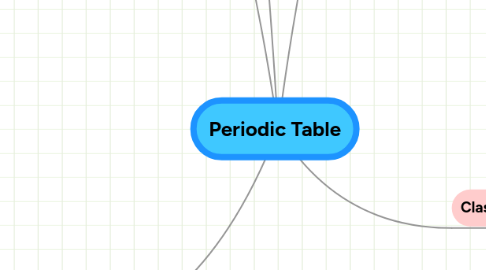
1. Alternative versions
2. Periodicity of chemical properties
2.1. Atomic radius
2.1.1. Definitions
2.1.2. Empirically measured atomic radii
2.1.3. Explanation of the general trends
2.1.4. Lanthanide contraction
2.1.4.1. Cause
2.1.4.2. Effects
2.1.4.2.1. Properties of the lanthanides
2.1.4.2.2. Influence on the post-lanthanides
2.1.5. d-Block contraction
2.2. Ionization potential
2.2.1. Values and trends
2.2.1.1. 1st–10th
2.2.1.2. 11th–20th
2.2.1.3. 21st–30th
2.2.2. Electrostatic explanation
2.2.3. Quantum-mechanical explanation
2.2.4. Molecules: Vertical ionization energy and adiabatic ionization energy
2.3. Electron affinity
2.3.1. Electron affinities of the elements
2.3.1.1. Elements
2.3.1.2. Molecules
2.3.2. Molecular electron affinities
2.3.3. Electron affinity of Surfaces
2.4. Electronegativity
2.4.1. Electronegativities of the elements
2.4.2. Methods of calculation
2.4.2.1. Pauling electronegativity
2.4.2.2. Mulliken electronegativity
2.4.2.3. Allred–Rochow electronegativity
2.4.2.4. Sanderson electronegativity
2.4.2.5. Allen electronegativity
2.4.3. Correlation of electronegativity with other properties
2.4.4. Trends in electronegativity
2.4.4.1. Periodic trends
2.4.4.2. Variation of electronegativity with oxidation number
2.4.5. Group electronegativity
2.4.6. Electropositivity
2.5. Trends of groups
2.6. Trends of periods
3. History
3.1. Elemental ideas from ancient times
3.2. Age of Enlightenment
3.2.1. Antoine-Laurent de Lavoisier
3.2.2. Johann Wolfgang Döbereiner
3.3. Classifying Elements
3.3.1. Alexandre-Emile Béguyer de Chancourtois
3.3.2. John Newlands
3.4. Dimitri Mendeleev
3.4.1. Lothar Meyer
3.5. Refinements to the periodic table
3.5.1. Henry Moseley
3.5.2. Glenn T. Seaborg
3.6. Main discovery periods
3.7. The periodic table as a cultural icon
4. Structure
5. Classification
5.1. Groups
5.1.1. Group 1
5.1.2. Group 2
5.1.3. Group 3
5.1.4. Group 4
5.1.5. Group 5
5.1.6. Group 6
5.1.7. Group 7
5.1.8. Group 8
5.1.9. Group 10
5.1.10. Group 11
5.1.11. Group 12
5.1.12. Group 13
5.1.13. Group 14
5.1.14. Group 15
5.1.15. Group 16
5.1.16. Group 17
5.1.17. Group 18
5.2. Periods
5.2.1. Chemical elements in the first period
5.2.2. Chemical elements in the second period
5.2.3. Chemical elements in the third period
5.2.4. Chemical elements in the fourth period
5.2.5. Chemical elements in the fifth period
5.2.6. Chemical elements in the sixth period
5.2.7. Chemical elements in the seventh period
5.2.8. Chemical elements in the eighth period
5.3. Blocks
5.3.1. s-block
5.3.2. p-block
5.3.3. d-block
5.3.4. f-block
5.3.5. g-block
